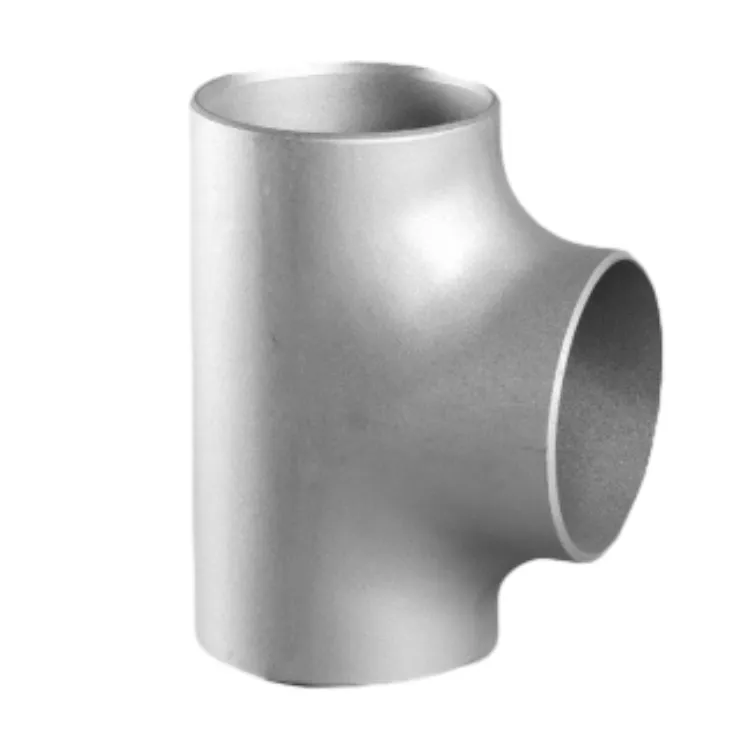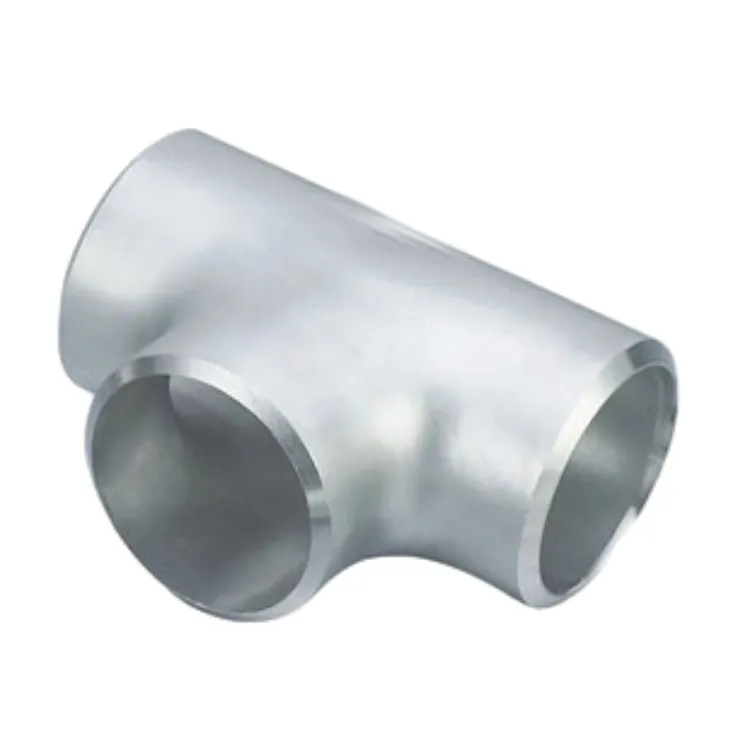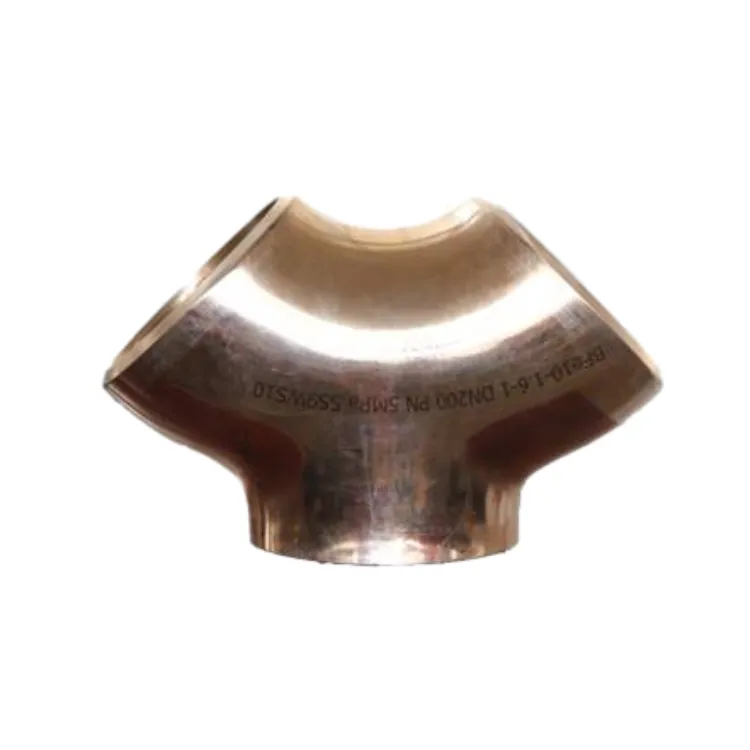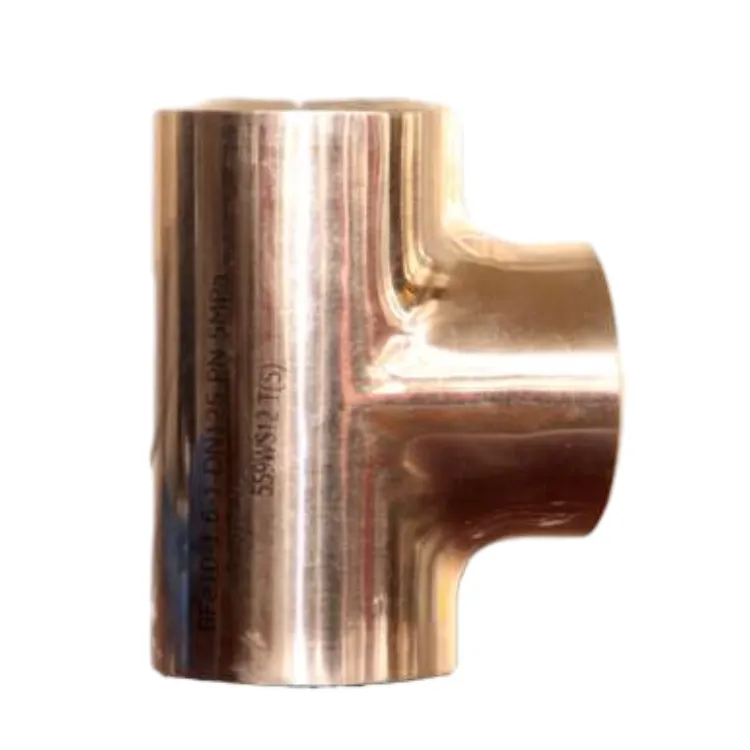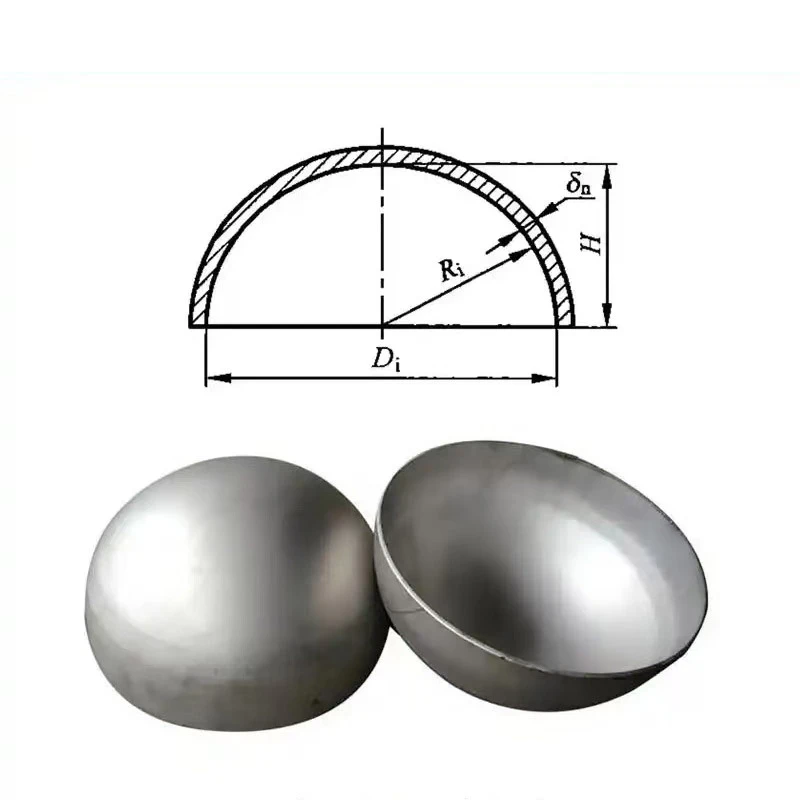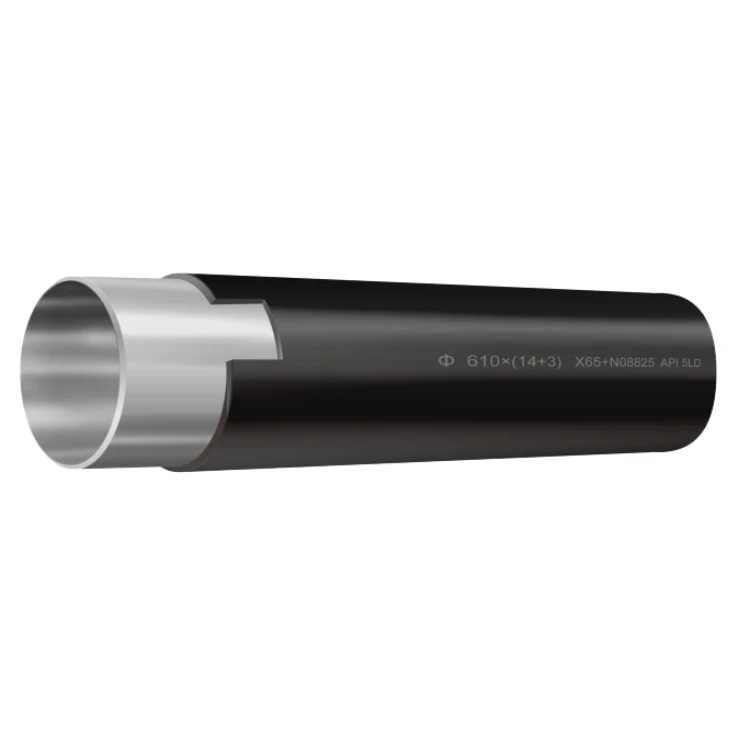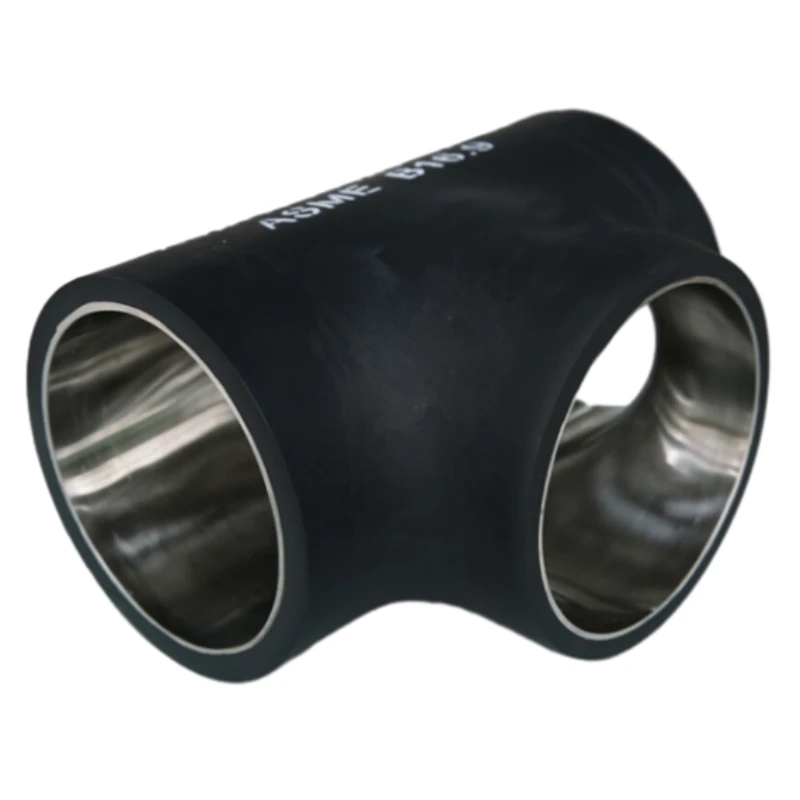In the vast and intricate networks of pipelines that crisscross our world, from bustling urban centers to remote industrial facilities, the integrity and efficiency of fluid transport are paramount. At the heart of this reliability lies a crucial component: the steel tee fitting. A pipe fitting designed to connect three pipes, a steel tee allows for the branching of a main pipeline, facilitating the distribution or collection of various media such as oil, gas, water, chemicals, and slurries. This comprehensive guide delves into the world of Tee Pipes, exploring their significance, technical specifications, manufacturing intricacies, and diverse applications.
Product Highlight: Tee Pipe
Our featured product, the Tee Pipe, exemplifies precision engineering and robust performance. Designed for critical applications across various industries, our Tee Pipes ensure optimal flow distribution and long-term durability. Discover more at: https://www.lion-pipeline.com/tee-pipe.html
Industry Trends and Evolution of Steel Tee Technology
The global demand for reliable fluid conveyance systems continues to surge, driven by expanding industrial sectors, urbanization, and the need for efficient resource management. This trend significantly impacts the market for steel tee fittings. Recent market analyses project a steady growth in the global pipe fittings market, with an estimated CAGR of 4-6% over the next five years, primarily fueled by investments in oil & gas, infrastructure, and chemical industries. Key trends shaping the evolution of steel tee technology include:
- Advanced Material Science: Beyond standard carbon steel tee fittings, there's a growing emphasis on high-performance alloys offering superior corrosion resistance, higher temperature endurance, and enhanced strength-to-weight ratios. This includes duplex and super duplex stainless steels for highly corrosive environments, and specialized alloy steels for extreme pressure applications.
- Digitalization and Automation: The manufacturing process is increasingly benefiting from Industry 4.0 technologies. Automated welding, robotic handling, and advanced CNC machining ensure greater precision, reduced human error, and faster production cycles for complex metal tee fitting designs.
- Sustainability and Energy Efficiency: Manufacturers are focusing on producing fittings with smoother internal surfaces to minimize flow resistance, thereby reducing pumping energy requirements. Lighter yet stronger materials also contribute to lower transportation carbon footprints. Furthermore, the longevity and reduced leakage rates of high-quality steel tee fittings significantly contribute to environmental protection.
- Traceability and Quality Assurance: With increasing regulatory scrutiny, comprehensive material traceability (from raw material to finished product) is becoming standard. Non-destructive testing (NDT) techniques are more sophisticated, ensuring every butt weld tee meets stringent quality and safety parameters.
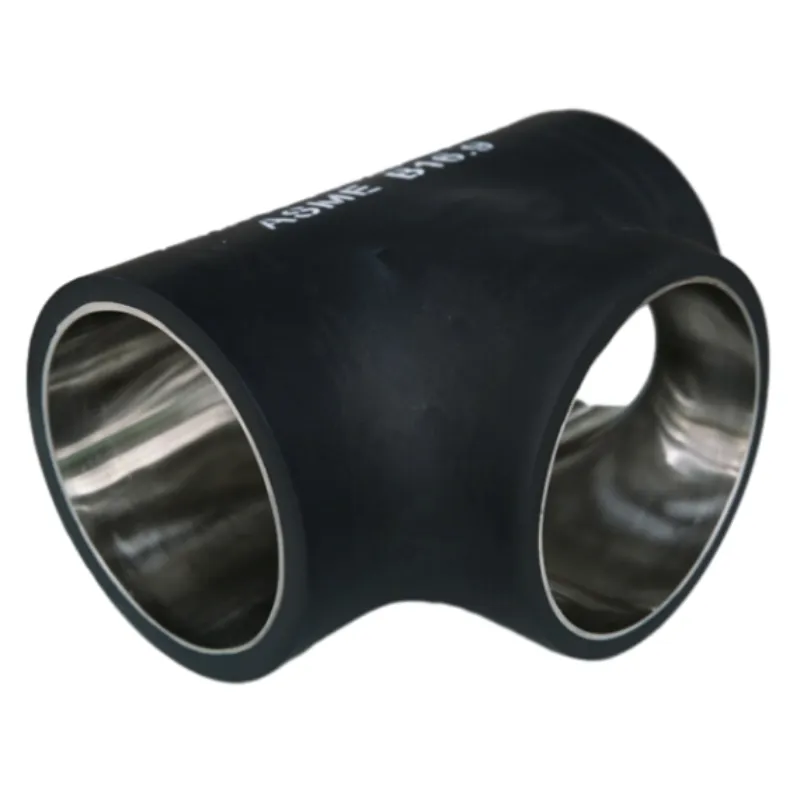
Technical Parameters and Specifications of Steel Tee
A steel tee is characterized by its T-shaped structure, featuring a main run pipe and a 90-degree branch pipe. The design allows for the diversion or combination of fluid flow. Depending on the application, steel tee fittings come in various types and specifications:
- Equal Tee: All three outlets (the run and the branch) have the same diameter.
- Steel Reducing Tee: The branch outlet diameter is smaller than the run pipes. This is crucial for managing flow rates and pressures.
- Butt Weld Tee: Designed to be welded directly to pipes, offering a permanent and leak-proof connection, ideal for high-pressure and high-temperature applications.
- Socket Weld Tee & Threaded Tee: Used for smaller pipe diameters, typically in low-pressure systems.
Common Materials for Steel Tee Fittings:
- Carbon Steel Tee: Widely used due to its excellent strength and cost-effectiveness. Common grades include ASTM A234 WPB (for moderate and high-temperature service) and ASTM A420 WPL6 (for low-temperature applications). These are typically used in general industrial applications, oil & gas, and water pipelines.
- Stainless Steel Tee: Offers superior corrosion resistance. Grades like 304/304L (general purpose, good corrosion resistance) and 316/316L (enhanced corrosion resistance, especially against chlorides) are prevalent in chemical processing, food & beverage, and marine environments.
- Alloy Steel Tee: Such as ASTM A234 WP5, WP9, WP11, WP22, WP91, suitable for high-temperature and high-pressure service in power generation and petrochemical industries due to added elements like Chromium and Molybdenum.
Key Technical Specifications & Standards:
Adherence to international standards is crucial for interoperability, safety, and performance. Major standards governing steel tee fittings include:
- ASME B16.9: Factory-Made Wrought Butt Welding Tee Fittings. This standard covers overall dimensions, tolerances, ratings, testing, and markings for seamless and welded fittings.
- ASME B16.11: Forged Fittings, Socket-Welding and Threaded. This applies to smaller diameter, high-pressure fittings.
- MSS SP-75: Specification for High Test Butt Welding Tee Fittings.
- ISO 9001: Quality Management System certification, ensuring consistent product quality.
- ANSI/API standards: Often specified for oil and gas applications.
Typical Parameters for Steel Tee Fittings:
| Parameter |
Description |
Common Values/Ranges |
| Nominal Pipe Size (NPS) / DN |
Refers to the pipe's nominal outer diameter, indicating the size of the run and branch. |
NPS 1/2" (DN15) to NPS 48" (DN1200) and larger |
| Wall Thickness (Schedule) |
Indicates the thickness of the pipe wall, determining pressure rating. |
Sch 10, Sch 20, Sch 30, STD, Sch 40, Sch 60, XS, Sch 80, Sch 100, Sch 120, Sch 140, Sch 160, XXS |
| Material Grade |
Specific alloy composition and mechanical properties. |
ASTM A234 WPB (Carbon Steel), ASTM A420 WPL6 (Low Temp CS), ASTM A403 WP304/316 (Stainless Steel), ASTM A234 WP5/WP11/WP22 (Alloy Steel) |
| End Connection |
How the fitting connects to the pipe. |
Butt Weld, Socket Weld, Threaded (NPT, BSPT) |
| Manufacturing Method |
Process used to form the tee. |
Seamless (Hot Extruded, Hydroformed), Welded (Fabricated) |
| Pressure Rating |
Maximum internal pressure the fitting can withstand, influenced by material, thickness, and temperature. |
Varies significantly based on schedule and material; e.g., Class 150 to Class 2500 for flanged connections, or corresponding pressure for butt weld. |
| Temperature Range |
Operational temperature limits. |
-45°C to 450°C for carbon steel; -196°C to 800°C for some stainless steels and alloys |
| Corrosion Resistance |
Ability to resist chemical degradation. |
Low (Carbon Steel), Medium (some alloys), High (Stainless Steel) |
Application Scenarios of Steel Tee
The versatility of steel tee fittings makes them indispensable in a multitude of industries where reliable fluid and gas transmission is critical. Their ability to manage flow direction and volume is central to the operational efficiency of these sectors:
- Petrochemical Industry: In oil refineries, natural gas processing plants, and chemical manufacturing facilities, steel tee fittings (especially carbon steel tee and alloy steel variants) are crucial for routing crude oil, refined products, and various chemicals under high pressure and temperature. Their robust construction ensures integrity against corrosive media and extreme operating conditions.
- Power Generation: Used extensively in thermal and nuclear power plants for steam lines, cooling water systems, and fuel lines. High-grade alloy steel tee fittings withstand the immense pressures and temperatures associated with steam generation and distribution, contributing to efficient energy production.
- Water Treatment and Supply: Essential for municipal water supply networks, industrial water treatment plants, and wastewater management systems. Steel tee fittings facilitate branching off main water lines to residential areas, commercial buildings, or treatment units, ensuring efficient distribution. Their longevity minimizes leakage and maintenance.
- Metallurgy & Mining: In these heavy industries, steel tee fittings are used in slurry pipelines (transporting mineral ores and waste), water cooling systems for furnaces, and gas lines. The abrasive nature of slurries often necessitates specialized wear-resistant metal tee fitting solutions.
- Construction & HVAC: Large-scale commercial and industrial buildings utilize steel tee fittings in their heating, ventilation, and air conditioning systems for distributing chilled or heated water, refrigerants, and sometimes steam.
In all these scenarios, the selection of the correct steel tee type (e.g., steel reducing tee for flow control or butt weld tee for high-integrity connections) is paramount to achieving optimal system performance, safety, and longevity.
Technical Advantages of High-Quality Steel Tee Fittings
Investing in high-quality steel tee fittings offers significant technical and operational advantages, contributing to the overall efficiency, safety, and economic viability of pipeline systems:
- Exceptional Durability and Longevity: Manufactured from robust materials like carbon steel tee or stainless steel, these fittings are designed to withstand decades of continuous operation under demanding conditions. This reduces the need for frequent replacements, minimizing downtime and maintenance costs.
- Superior Pressure and Temperature Tolerance: Engineered to specific ASME and ANSI standards, quality steel tee fittings can safely handle extreme internal pressures and a wide range of operating temperatures, from cryogenic to superheated steam, without compromising structural integrity.
- Outstanding Corrosion Resistance: For applications involving corrosive media (acids, alkalis, saltwater), stainless steel and specialized alloy metal tee fitting options offer unparalleled resistance to chemical degradation and pitting, extending service life and preventing costly leaks or environmental hazards. This directly translates into enhanced safety and reduced environmental impact.
- Optimized Flow Efficiency: Precision manufacturing, especially for seamless steel tee fittings, ensures smooth internal surfaces and accurate dimensions. This minimizes turbulence and pressure drops, leading to more efficient fluid flow and reduced pumping energy consumption, thereby contributing to significant energy savings.
- Enhanced Safety and Reliability: Strict adherence to manufacturing standards and rigorous testing protocols for every butt weld tee ensure freedom from defects. This guarantees leak-proof connections and reduces the risk of catastrophic failures, protecting personnel, assets, and the environment.
- Cost-Effectiveness Through Reduced Lifecycle Costs: While initial investment in high-quality fittings might be slightly higher, the long-term benefits of reduced maintenance, fewer repairs, extended service life, and efficient operation lead to substantial overall cost savings throughout the system's lifecycle.
Detailed Manufacturing Process of Tee Pipe
The production of a high-quality steel tee, especially a seamless one, involves a series of sophisticated processes that ensure its structural integrity and dimensional accuracy. The primary method for manufacturing seamless steel tee fittings is hot extrusion or hydroforming. Here’s a detailed breakdown:
1
Raw Material Selection & Cutting
The process begins with the careful selection of high-grade steel pipes or plates, conforming to international standards like ASTM, ASME, or EN. For seamless tees, a steel pipe (known as a "seamless pipe billet") of the desired material (e.g., carbon steel tee grade) is cut to a precise length. For larger diameter or specialized butt weld tee fittings, steel plates are cut and then formed into pipe sections before welding.
2
Pre-heating & Forming (Hot Extrusion/Hydroforming)
The cut pipe section is uniformly heated in a furnace to a specific forging temperature, typically above 900°C, to make the steel malleable. There are two primary forming methods for seamless tees:
- Hot Extrusion/Hot Pressing: The heated pipe is placed in a special die. A pressing machine forces a forming mandrel into the pipe, extruding the branch out from the main body. This method is highly effective for forming the T-shape with consistent wall thickness.
- Hydroforming (Cold/Hot): This method uses high-pressure water (or other fluid) to expand the branch out from the main pipe. The pipe is placed in a mold, sealed, and then pressurized fluid is introduced internally, forcing the steel to expand outwards into the branch cavity of the mold. This method yields excellent surface finish and dimensional accuracy for a metal tee fitting.
3
Trimming & Sizing
After forming, excess material from the branch and ends is trimmed off. The tee is then put through sizing dies to ensure the correct diameters, wall thicknesses, and dimensional tolerances are achieved according to standards like ASME B16.9 or MSS SP-75. This step is critical for a precise steel reducing tee.
4
Heat Treatment
To relieve internal stresses induced during forming and to optimize mechanical properties (strength, toughness, ductility), the steel tee undergoes specific heat treatment processes. Common treatments include normalizing (heating and air cooling), quenching (rapid cooling), and tempering (reheating to a lower temperature). This significantly enhances the service life and performance of the steel tee.
5
Surface Treatment & Finishing
Depending on the material and application, the steel tee may undergo surface treatments. This could include pickling and passivation for stainless steel to remove surface contaminants and enhance corrosion resistance, or shot blasting and coating (e.g., anti-corrosion paint, epoxy) for carbon steel tee fittings to protect against environmental degradation.
6
Inspection & Quality Control
Rigorous inspection and testing are performed at multiple stages. This includes:
- Dimensional Inspection: Using calipers, gauges, and laser scanners to verify conformity to specified dimensions.
- Visual Inspection: Checking for surface defects, cracks, or imperfections.
- Non-Destructive Testing (NDT): Techniques like Ultrasonic Testing (UT) for internal flaws, Magnetic Particle Testing (MPT) for surface cracks, Radiographic Testing (RT) for internal volumetric flaws, and Liquid Penetrant Testing (LPT) for surface-breaking defects. For critical applications, 100% NDT is often required.
- Hydrostatic Testing: For specific requirements, the tee may be subjected to internal water pressure tests to ensure leak-tightness.
- Material Verification (PMI - Positive Material Identification): Using X-ray fluorescence (XRF) or optical emission spectrometry (OES) to confirm the exact chemical composition of the alloy.
7
Marking & Packaging
Finally, each steel tee is permanently marked with essential information, including its size, schedule, material grade, heat number, manufacturer's logo, and relevant standard. This ensures full traceability. Fittings are then carefully packaged to prevent damage during transportation and storage.
This meticulous manufacturing process, combined with stringent quality control, ensures that every steel tee delivered meets the highest standards of performance, reliability, and safety for its intended application, leading to a long and reliable service life typically exceeding 20-30 years under proper installation and operational conditions.
Choosing the Right Manufacturer: Beyond the Steel Tee
When procuring steel tee fittings, selecting the right manufacturer is as crucial as the product itself. A reputable manufacturer offers not just a product, but a partnership built on expertise, experience, authoritativeness, and trustworthiness (EEAT). Here's what to consider:
- Expertise & Technical Prowess: A leading manufacturer possesses deep engineering knowledge of metallurgy, fluid dynamics, and manufacturing processes. They can offer insights into the best material for specific applications (e.g., advising between a carbon steel tee or stainless steel for a given medium), design considerations for pressure and temperature, and optimal end connections (like a butt weld tee for high-integrity systems).
- Experience & Track Record: Look for manufacturers with extensive experience (e.g., over 15-20 years in the industry) and a proven track record of successful projects in diverse sectors. Their portfolio should include complex and challenging applications, demonstrating their capability to handle demanding requirements. Customer feedback and testimonials should reflect consistent performance and problem-solving abilities.
- Authoritativeness & Certifications: A credible manufacturer holds industry-recognized certifications such as ISO 9001 for quality management, ISO 14001 for environmental management, and OHSAS 18001 (or ISO 45001) for occupational health and safety. Furthermore, product-specific certifications (e.g., API 6A, CE marking, PED compliance) and approvals from major end-users or engineering firms enhance their authority. Partnerships with industry leaders or membership in respected associations (e.g., Manufacturers Standardization Society - MSS) also signal authority.
- Trustworthiness & Transparency: This encompasses transparent manufacturing processes, detailed documentation (Material Test Certificates - MTCs, NDT reports), robust warranty policies (e.g., 1-5 years against manufacturing defects), and clear communication regarding delivery schedules and potential challenges. Exceptional customer support, including pre-sales consultation and post-sales technical assistance, builds long-term trust.
Customization Solutions for Unique Project Demands
While standard steel tee fittings cater to most requirements, many industrial projects present unique challenges that necessitate bespoke solutions. A truly capable manufacturer excels in providing customized metal tee fitting solutions, including:
- Non-Standard Sizes and Dimensions: Projects often require tees with specific run and branch diameters, non-standard wall thicknesses, or unique lengths that deviate from standard ASME B16.9 dimensions.
- Special Materials and Alloys: For extreme environments involving highly corrosive media, cryogenic temperatures, or ultra-high pressures, standard carbon steel tee or even typical stainless steel may not suffice. Custom solutions involve exotic alloys, nickel alloys, or titanium, ensuring chemical compatibility and structural integrity.
- Specific Coatings and Linings: To enhance corrosion resistance, prevent fouling, or minimize abrasion, customized internal linings (e.g., PTFE, ceramic) or external coatings (e.g., FBE, internal painting for potable water) can be applied.
- Special End Preparations: Beyond standard butt weld tee bevels, specialized end preparations for specific welding procedures or connection types may be required.
- Complex Configurations: This might include designing custom manifolds using multiple tees, or creating a steel reducing tee with eccentric reductions for specific flow dynamics.
Effective customization requires close collaboration between the client's engineering team and the manufacturer's technical experts, leveraging advanced CAD/CAM tools and simulation software to design, prototype, and validate solutions before manufacturing.
Application Cases & Client Experience
Our commitment to delivering high-quality steel tee fittings has translated into tangible benefits for clients across diverse industries. Here are illustrative examples of our products in action:
- Major Oil & Gas Pipeline Project (Middle East): For a critical crude oil transmission pipeline, we supplied thousands of large-diameter butt weld tee fittings (NPS 36", Sch 80, ASTM A234 WPB) that met stringent pressure ratings and NDT requirements. Our adherence to tight delivery schedules and consistent product quality ensured the project's timely completion, minimizing costly delays. The client reported exceptional welding ease and long-term pipeline integrity.
- Chemical Processing Plant Expansion (Europe): A leading chemical manufacturer required highly corrosion-resistant steel reducing tee fittings for new processing units handling sulfuric acid. We provided custom-fabricated 316L stainless steel tees with specialized internal surface finishes. The client observed a significant reduction in maintenance and replacement costs compared to their previous solutions, attributing it to the superior anti-corrosion properties and precision manufacturing.
- Municipal Water Distribution Network Upgrade (North America): We supplied a large volume of epoxy-coated carbon steel tee fittings for a city's potable water infrastructure upgrade. Our products passed rigorous third-party water quality and longevity tests, ensuring safe and efficient water delivery for decades. The city engineers praised the ease of installation and the confirmed long service life, contributing to their infrastructure's sustainability goals.
These experiences underscore our dedication to providing reliable metal tee fitting solutions that meet and exceed customer expectations, demonstrating our expertise and commitment to supporting critical infrastructure projects worldwide.
FAQs about Steel Tee Fittings
Q1: What is the primary function of a steel tee in a pipeline system?
A1: A steel tee is a pipe fitting used to divide or combine fluid flow in a pipeline. Its T-shape allows a branch line to be connected to the main pipe, typically at a 90-degree angle, enabling changes in flow direction or the creation of additional outlets.
Q2: What is the difference between an Equal Tee and a Steel Reducing Tee?
A2: An Equal Tee (or Straight Tee) has all three outlets (the two ends of the main run and the branch) of the same diameter. A steel reducing tee has a branch outlet that is smaller in diameter than the main run, used to reduce flow or pressure in the branch line.
Q3: Why is butt weld tee often preferred for high-pressure applications?
A3: Butt weld tee fittings provide a permanent, robust, and leak-proof connection with pipes via welding. This full penetration weld creates a continuous, strong joint that can withstand extreme pressures, temperatures, and vibrations more effectively than threaded or socket weld connections, making them ideal for critical high-integrity systems.
Q4: What are the common materials for a carbon steel tee and where are they typically used?
A4: Common materials for carbon steel tee fittings include ASTM A234 WPB (for general, moderate temperature service) and ASTM A420 WPL6 (for low-temperature applications). They are widely used in general industrial piping, oil & gas pipelines, water treatment, and power generation due to their excellent strength, durability, and cost-effectiveness.
Q5: What inspection standards ensure the quality of a steel tee?
A5: Quality is ensured through adherence to international standards like ASME B16.9 (for dimensions and tolerances), MSS SP-75, and ISO 9001 (for quality management systems). Furthermore, specific tests such as Non-Destructive Testing (NDT) like Ultrasonic Testing (UT), Radiographic Testing (RT), and Positive Material Identification (PMI) are performed to verify material integrity and absence of defects.
Q6: What is the typical service life of a well-maintained steel tee?
A6: With proper material selection, installation, and maintenance, a high-quality steel tee can have a service life ranging from 20 to 50 years, and often even longer. Factors influencing this include operating conditions (pressure, temperature, media corrosivity), material grade, and initial manufacturing quality.
Q7: How can steel tee fittings contribute to energy efficiency?
A7: High-quality steel tee fittings, especially those manufactured with smooth internal surfaces and precise dimensions, minimize turbulence and pressure drops in the pipeline. This reduces the energy required for pumps to move fluids, leading to significant energy savings over the system's operational lifespan. Additionally, their durability prevents leaks, further conserving resources.
Commitment to Trust and Excellence
We understand that reliability, timely delivery, and exceptional support are just as crucial as the quality of the product itself. Our commitment to our clients extends beyond the manufacturing floor:
- Transparent Delivery Cycles: We provide clear and realistic delivery schedules, with consistent updates throughout the manufacturing and shipping process. Expedited options are available for urgent project requirements.
- Robust Quality Assurance: Every steel tee undergoes a multi-stage quality control process, including comprehensive material verification and NDT, ensuring compliance with all specified standards and client requirements.
- Comprehensive Warranty: We stand by the quality of our Tee Pipe products with a substantial warranty against manufacturing defects, providing peace of mind and long-term security for your investment.
- Dedicated Customer Support: Our team of experienced engineers and customer service professionals is available to provide technical consultation, installation guidance, and responsive after-sales support, ensuring seamless project execution from concept to completion.
Conclusion
The steel tee is far more than a simple pipe fitting; it is a linchpin of modern industrial infrastructure, enabling the efficient and safe distribution of vital resources across diverse sectors. From the robust carbon steel tee in general services to specialized alloy butt weld tee for extreme conditions, the advancements in materials, manufacturing processes, and quality control ensure unparalleled reliability. Choosing a manufacturer that demonstrates deep expertise, proven experience, undeniable authoritativeness, and unwavering trustworthiness is paramount to unlocking the full potential of these critical components. As industries continue to grow and demand more sophisticated pipeline solutions, the role of the high-performance steel tee will only become more indispensable.
References & Further Reading:


